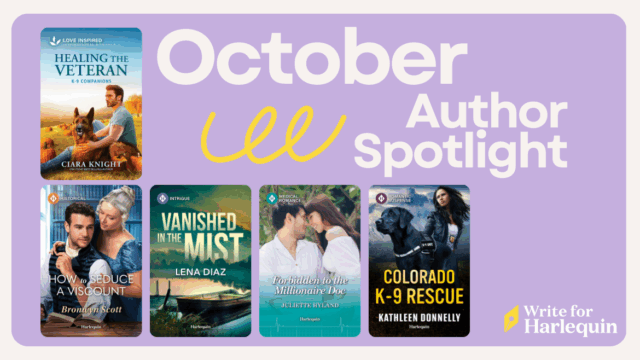Today’s archived post is from Harlequin Refresh, a blog series we ran last January featuring our best advice on freshening up your writing!
Once you’ve reached the end of your first (or twelfth) draft, you might think you’re ready to submit your fabulous romance novel. But are you? And how do you know if you’re really ready? One answer is that, on a gut level, you feel ready and that’s just how it is. Excellent!
But if you’re still uncertain and think your draft could use a little more fairy dust, consider these suggestions…
Do you describe setting in a way that enhances the scene? Setting can be tricky. Some do it right, with that magical balance of detail and narrative to ground you into the story. Sometimes, too much setting slows your pacing. If you do it right, those setting details add richness. Readers want to see the world you’re building.
Write meaningful dialogue. Create that spark between your characters or reveal them through conversation. Avoid too much small talk, the kind one might hear in real life. For instance, you don’t want listen to romance novel characters discussing at length the best route to the farmer’s market. Weather talk, anyone? No, you want to make us hang onto your character’s every word. Also, ask yourself if the dialogue seems real.
The first encounter between the main characters. They don’t have to meet on the first page, but let them lock eyes sooner rather than later. Make that first glimpse meaningful, inevitable, unforgettable, and dare-I-say sexy (depending on the line). In a romance novel, life moves faster so get the story going as soon as you can.
Don’t waste words. It is so tempting to show your reader how eloquent and poetic you are. See how you go on for ten pages about the history of Cartier watches? Um, yeah, we don’t need that. A little flash is nice, but bring your focus on the romance.
Cut scenes that don’t matter. Along with words, we often read scenes that don’t advance the story. You may “see” the scene and it bubbles into this fantastic tangent about the heroine’s trip to Sicily last Christmas and how there really is such a thing as a siesta. Don’t fall for it! Save that scene for your book on travel. Focus on the romance.
Scenes should follow logically. In the vein of keeping scenes tight, go through and make sure one chapter follows the next. This is a pesky but necessary task, which will ensure your timelines and plot points remain easy to follow (and accurate).
Prune clichés. Because writers are great readers and observers, they pick up commonly used expressions. Well, everyone repeats terms used over and over again, such as, “He was hungry, but not for food.” Or…”She was attractive, but not beautiful.” Or “They danced the night away.” Or “They made beautiful music together.” It’s always a good idea to review how you use language. If you can, take out that cliché.
“Why do I have to read this?” An agent friend of mine once asked me this question and I thought, “Wow, this is very direct…and true!” If you want to win an editor’s heart, make it clear why we have to read your book. With your well-written and well-edited manuscript, show us why we should read your story.
And if you need even more tips and encouragement, look no further than my romance writing checklist! Know that you have a big community of support in this process and the more you write, the better you’ll be. It is difficult, a real labor of love, to birth that story. The worst thing you can do is be too hard on yourself or give up. In fact, when you get to this point, where you are editing and rewriting, you are making real progress. So reward yourself…and then get back to work.
Happy Writing!





